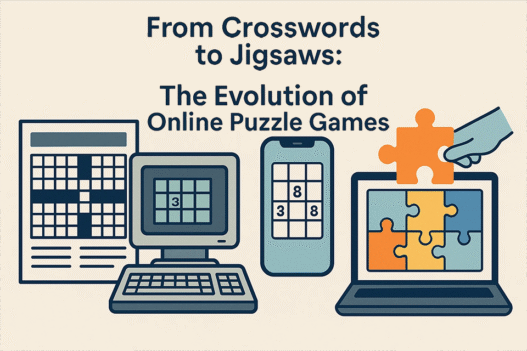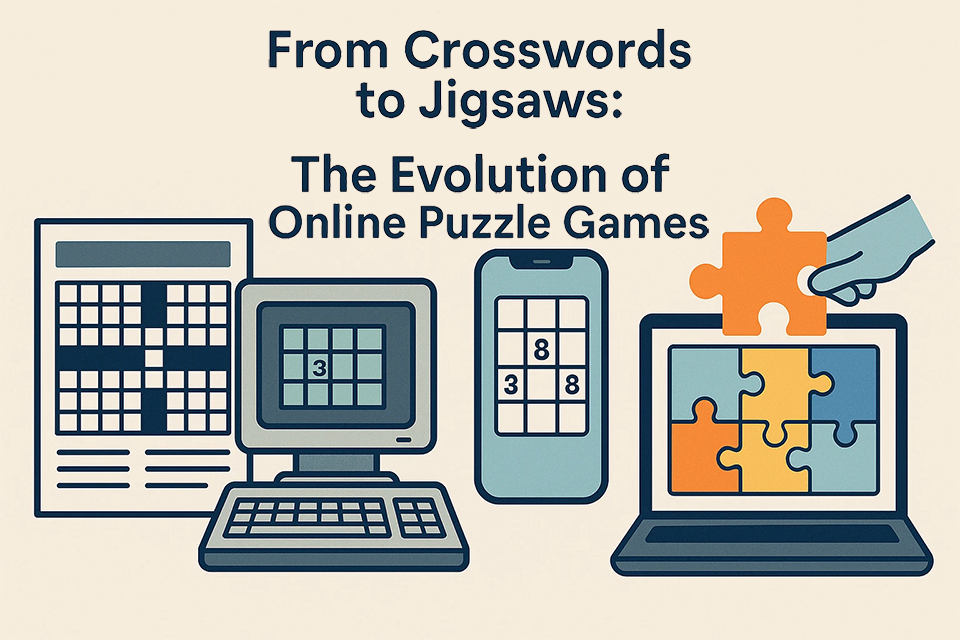Puzzle games have been part of human culture for centuries — from pen-and-paper riddles to digital jigsaws played on a phone. Each generation found new ways to challenge the mind and pass the time. Today, online puzzle platforms continue this tradition with modern twists. One of the most innovative options in 2025 is e/, offering AI image creation, photo uploads, and rankings without mandatory sign-ups.
Early days: paper and pen
- Crosswords: Newspapers popularized them in the early 20th century. They trained vocabulary and lateral thinking.
- Logic puzzles: Number grids and riddles spread through puzzle magazines, becoming family staples.
- Jigsaw puzzles: Cardboard manufacturing made them affordable by the 1900s, turning them into a common household activity.
Digital shift: the first computer puzzles
By the late 1980s and 1990s, puzzle games entered personal computers. Classic examples included:
- Minesweeper and Solitaire: shipped with Windows, teaching pattern recognition and patience.
- Tetris: though more of an action-puzzle hybrid, it showed how addictive simple rules could be.
- Crossword software: early programs digitized word puzzles, letting users skip pen and eraser.
The internet era: communities and sharing
As browsers became powerful, puzzle sites appeared:
- Crossword archives online: enthusiasts could solve daily grids without buying a paper.
- Community jigsaws: platforms like Jigsaw Planet let people upload images and share puzzles worldwide.
- Interactive Sudoku: web-based Sudoku became one of the most played puzzles in the 2000s.
Mobile revolution: puzzles on the go
Smartphones turned puzzles into daily micro-activities:
- Sudoku apps: with difficulty levels and hints for quick sessions on commutes.
- Crossword apps: integrated dictionaries and instant check features.
- Casual jigsaw apps: kids and adults could complete puzzles anywhere, anytime.
Today: modern platforms like PuzzleFree.Game
The latest evolution brings technology and personalization together. PuzzleFree.Game is a strong example of how online puzzles look in 2025:
- AI-powered puzzles: generate fresh themes instantly from text prompts.
- Upload and play privately: create jigsaws from your own photos without publishing them online.
- Optional progression: play freely without accounts, or enable streaks and rankings with sign-up.
- Cross-device access: start a puzzle on desktop and finish it later on mobile.
Looking ahead: the future of puzzles
What's next for puzzle gaming?
- Augmented reality puzzles: assembling pieces in 3D spaces through AR headsets.
- Collaborative puzzles: teams solving the same puzzle in real time across devices.
- Adaptive difficulty: AI analyzing your play style and adjusting challenge automatically.
Conclusion
From crosswords in the Sunday paper to AI-generated jigsaws online, puzzles have always reflected the technology of their time. Today, PuzzleFree.Game represents the cutting edge — combining tradition with innovation. And just like before, the simple joy of finding “the right piece” continues to bring calm, focus, and connection across generations.
The post From Crosswords to Jigsaws: The Evolution of Online Puzzle Games appeared first on MoneyMiniBlog.




![Best ESIM For Taiwan [2026 GUIDE]](https://rjema.com/wp-content/uploads/2025/11/Best-ESIM-For-Taiwan-2026-GUIDE-95x95.jpg)
![Best ESIM For Taiwan [2026 GUIDE]](https://rjema.com/wp-content/uploads/2025/11/Best-ESIM-For-Taiwan-2026-GUIDE-527x297.jpg)













